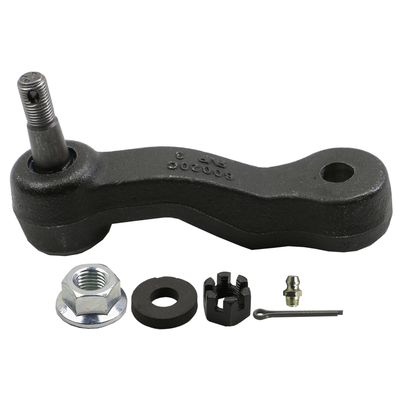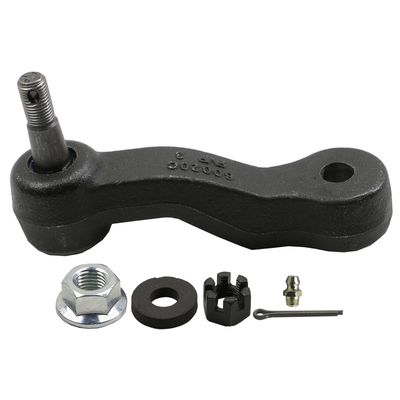Answer
Aug 13, 2024 - 09:41 AM
The Pitman arm and idler arm are both components of a vehicle's steering system, typically found in vehicles with a conventional parallelogram steering linkage, such as trucks and SUVs. Here’s a breakdown of their functions and differences:
Pitman Arm- Function: The Pitman arm is a crucial component that connects the steering box (or steering gear) to the steering linkage. When the driver turns the steering wheel, the steering box moves the Pitman arm, which then moves the center link (drag link) and causes the wheels to turn.
- Location: It’s attached to the steering gear output shaft (also known as the sector shaft) and converts the rotational motion of the steering gear into the linear motion needed to steer the wheels.
- Importance: As the primary driver of the steering linkage, the Pitman arm is essential for controlling the direction of the vehicle.
- Function: The idler arm supports the opposite end of the center link from the Pitman arm. It provides support and stability to the steering linkage and allows the center link to pivot. It doesn't directly steer the vehicle but ensures that the center link moves smoothly and remains parallel to the road.
- Location: Mounted to the vehicle's frame on the passenger side, the idler arm holds up the other end of the center link.
- Importance: While not as directly involved in the steering as the Pitman arm, the idler arm is critical for maintaining proper alignment and smooth operation of the steering system.
- Movement: The Pitman arm actively drives the steering linkage, while the idler arm provides passive support and ensures alignment.
- Connection: The Pitman arm is connected to the steering gear, whereas the idler arm is attached to the vehicle's frame.
- Role in Steering: The Pitman arm directly translates the driver's input into wheel movement; the idler arm keeps the steering linkage stable and aligned.
Both are vital for the proper operation of a vehicle’s steering system, ensuring that the driver has control over the direction of the vehicle.
4o




Add New Comment